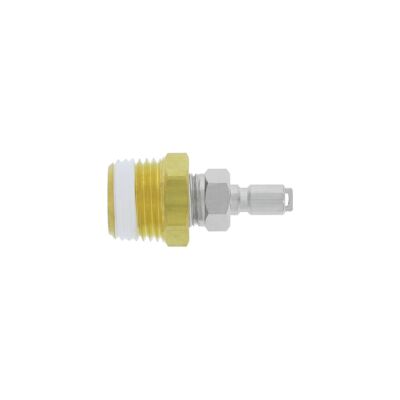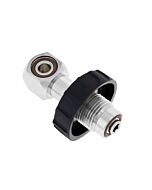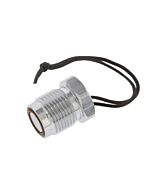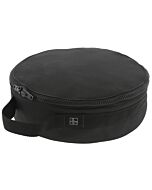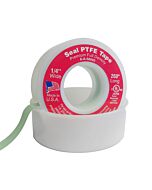Drive Gas Adapter for Booster
- Standard BC quick-connect fitting
- Use BC hose w/ first stage as drive gas supply
- Select Haskel MSB-9000 version for NPT 1/2"-14 fitting
- Select DGX Gears X-30 version for PT/BSPT 3/8"-19 fitting
Drive Gas Adapter for Booster
This adapter contains a standard low pressure BC quick connect post to 1/4" NPT male fitting, assembled with a 1/4" NPT female to either 1/2" NPT male adapter for your Haskel MK-9000 booster or a 3/8" BSPT (aka Japanese Industrial Standard 3/8" PT) male adapter for your DGX Gears X-30 booster. This assembly allows you to use a BC inflator hose connected to the low pressure port of a standard scuba first stage regulator and air tank as your drive gas supply, thus eliminating the need for a low pressure drive gas compressor. Note this Drive Gas Adapter is already included in our Deluxe Fitting and Hose Kit for the booster.
| Brand | DGX |
|---|---|
| SKU | DX-9adaptor |
| Weight | 0.250000 |
Customer Reviews
Drive Gas Options for the Booster
Our SCUBA gas boosters are normally driven with the BC inflator hose off the first stage of a diving regulator using a SCUBA tank for the source of a clean and low moisture drive gas. That allows the booster to be highly portable, operating in locations where no electrical outlet is available. Rather than a SCUBA tank, it can be more convenient and cost effective to drive the booster from a portable reciprocating single-stage piston oil-free low-pressure 'shop air' compressor powered by ordinary household electrical current, as long as the air is properly dried and filtered prior to use as a drive gas.
For a drive gas compressor, the air volume rating (typically in cubic-feet-per-minute or CFM) will determine the maximum booster cycle speed and the air pressure rating (typically pounds-per-square-inch or PSI) will determine the maximum boost pressure. In a pinch, almost any air compressor that can deliver at least 1.5 CFM will work although the booster will be quite slow and may not be able to achieve maximum boost pressure. The 3 to 6 CFM range air compressors are adequate for most boosting applications although the boost may pause occasionally while the compressor catches up and the boost cycle time will be noticeably slower approaching higher boost pressures (not necessarily a bad thing). The 7 to 10 CFM range shop air compressors with a large reservoir tank (typically configured with a 3 to 5 HP motor and 30 to 60 gallon tank) capable of maintaining a constant regulated 120 PSI will produce the best results for boosting.
Depending on ambient air conditions, the need to manually empty the compressor condensate during operation can be frequent so consider including an auto-drain feature. The design of the boosters are such that the drive gas section is separated from the boost gas section, however we strongly recommend additional moisture and particle filtration on the compressed air. If the drive gas contains moisture then it can cause corrosion to the piston rod and cylinder body, permanently damaging the booster.
With the higher volume compressors, add a variable flow control valve in the air line close to the booster itself in order to manage the cycle speed of the booster. We recommend not exceeding 50 cycles per minute continuously, but slower is better especially when boosting oxygen. The typical shop air line fitting is 1/4" NPT, so an adapter will be needed plus a high-flow quick-connect coupler compatible with the air line from the compressor.
There are a lot of sources for these kinds of compressors and accessories; home or hardware stores as well as specialty suppliers and of course on-line. We find the prices can vary considerably so it pays to shop around for the best value but you should be able to find something suitable for a few hundred dollars, although the higher end solutions are in the thousand dollar range.
